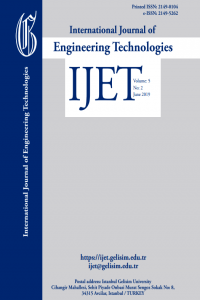Improving Torsional Rigidity and Seismic Performance of Tunnel Form Building Structures
Tunnel form buildings, which have shear-wall dominant structural systems, are usually built in countries exposed to substantial seismic risk and very commonly used because of its fast construction technique and low cost. Very limited research has been directed to their experimental studies on 3D behavior, seismic performance, load capacities, collapse mechanisms, and crack propagations. Previous studies indicate that most of the time the first period of the structure is torsion due to construction techniques outer faces is open to take the tunnel forms to out by cranes. This will cause less torsional rigidity, whereas for strong earthquakes, torsional rigidity has to be increased. Four different strengthening techniques, i.e., steel braces, reinforced concrete (RC) infill shear wall, precast concrete shear wall, and RC shear wall at the façade, were applied to improve torsion rigidity. Experimental studies and 3D nonlinear finite element analysis (FEA) were performed on models. The analytical model results, the economy and applicability of construction techniques suggest that steel bracing is the most suitable and practical method to improve torsional rigidity as well as seismic performance. Three-story scaled existing and strengthened experimental models are tested under pushover loads, and the results are compared with 3D nonlinear finite element analysis.
Keywords:
Tunnel form building, shear wall, experimental study torsional rigidity, seismic performance, pushover loading,
___
- Balkaya C, Schnobrich WC. “Nonlinear 3D behavior of shear-wall dominant RC building structures”, Structural Engineering Mech 1993; 1:1-16.
- Balkaya C, Kalkan E. “Nonlinear seismic response evaluation of tunnel form building structures”, Comput Struct 2003b; 81: 153-65.
- Balkaya C, Kalkan, E. “Three-dimensional effects on openings of laterally loaded pierced shear walls”, ASCE, Journal of Structural Engineering 2004b; 130: 1506-1514.
- Balkaya C, Kalkan E. “Estimation of fundamental periods of shear-wall dominant building structures”, Earthquake Engineering Structural Dynamics 2003a; 32: 985-98.
- Balkaya C, Kalkan E. “Seismic vulnerability, behavior and design of tunnel form building structures”, Engeneering Structures 2004a; 26: 2081-2099.
- Yuksel SB, Kalkan E. “Behavior of tunnel form buildings under quasi-static cyclic lateral loading”, Structural Engineering Mechanics 2007; 27: 99.
- Yuksel SB. “Structural behavior of lightly reinforced shear walls of tunnel form buildings”, IACSIT International Journal of Engineering Technology 2014; 6: 34-37.
- ISSN: 2149-0104
- Başlangıç: 2015
- Yayıncı: İstanbul Gelişim Üniversitesi
Sayıdaki Diğer Makaleler
Burcu SALGIN, Atacan Akgün, Nilay Coşgun, Kofi Agyekum
Mohammed GANA YİSA, Adeshina FADEYİBİ, Kamil KAYODE KATİBİ, O. C. UCHEOMA
Aniekan E. IKPE, Owunna IKECHUKWU
